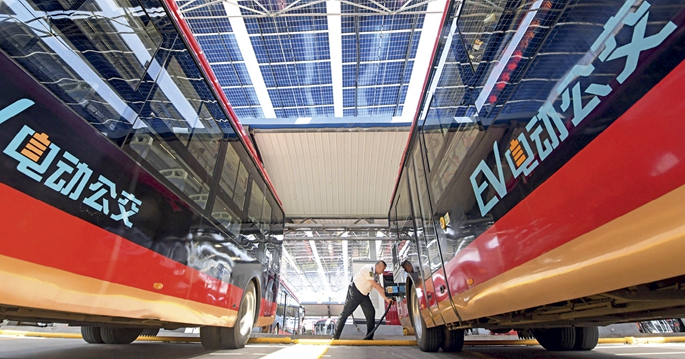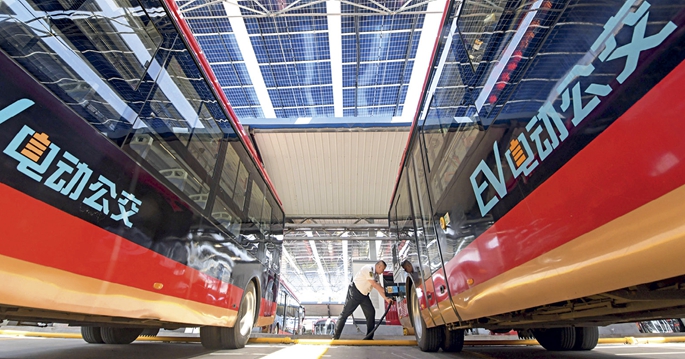Between market economy and state intervention, Morocco was inspired by the Chinese model to build its own path.
Picking summer tea with intelligent machines in the plantation of Taihe (Jiangxi), May 29, 2025
In the wake of the Foundation of the People’s Republic of China in 1949, the Chinese state, while initially benefiting from Soviet support, has gradually engaged in an autonomous path, affirming an foreign policy based on sovereignty, mutual respect and reciprocal benefits. This orientation found a concrete translation at the Bandung conference in 1955, where the then Chinese Prime Minister Zhou Enlai laid the normative bases of South-South cooperation based on the principles of peaceful coexistence. In 1963, on the occasion of his exchange with the late His Majesty King Hassan II, the dialectic between political independence and economic independence was fully reaffirmed as a condition of effective sovereignty in the postcolonial international system.
Faced with this common horizon, the concrete challenges diverge. Morocco, which became independent in 1956, was faced with a structural configuration marked by the sequelae of the colonial system: disarticulation of the productive apparatus, massive underemployment, deficiency in human capital and technological dependence. Inscribed in a geopolitical field polarized by the binary logic of the Cold War, the kingdom was to decide between two antagonistic economic paradigms: Western liberalism or centralized planning of Soviet inspiration. The late His Majesty King Hassan II drew from Moroccan socio -cultural specificities, in particular the tribal heritage based on economic autonomy, as well as historical relationships with Western powers, to design a third original way. This hybrid model, combining market economy and state strategic interventions, laid the foundations for modern Moroccan development.
The rigorous industrialization strategy of the People’s Republic of China, carried out from its foundation in 1949, inspired young postcolonial nations. Among the emblematic tools of this approach, the five -year plans emerge as a key instrument of economic governance. Morocco has not escaped this dynamic. His 1st five -year plan (1960–1964) was part of this proactive logic: he aimed above all the consolidation of social stability through the development of the agricultural sector, a sine qua non condition of national food security, prior to any long -term industrial enterprise. This strategic choice reflected the Moroccan will to make an original synthesis between opening up to Western markets and capital cooperation with socialist countries.
The five -year plan is a medium -term economic planning instrument, adopted by certain states to guide their national development under the impulse of the State. Introduced by the Soviet Union in 1928, this model was taken up by China in 1953, with a first plan focused on heavy industrialization, supported by 156 projects from Sino-Soviet cooperation.

A bus driver recharges his vehicle with electricity from the photovoltaic project of the 6th subsidiary of the investment group in transport in Luoyang (Henan), on May 19, 2025.
In China, these plans have always been a central lever of economic governance. Since 2006, they have been called “five -year development plans”, highlighting the desire to reconcile state planning and market mechanisms.
The 14th five -year plan (2021–2025) is distinguished by its strategic priorities: technological innovation, ecological transition and high quality development. As an actor engaged in the Sino-African technological partnership, I am particularly challenged by these lines of orientation, because they offer a promising base for balanced and mutually beneficial cooperation with Africa.
During an exchange with a senior Chinese official on an official visit to Morocco, I questioned him on the concrete methods of implementing the objectives set in the five -year plan, in a context where the Chinese economy is fully integrated into the global market. His answer was clear: under the leadership of the Chinese Communist Party, those responsible at all levels of governance are not only mobilized to achieve the assigned objectives, but encouraged to overcome them, while ensuring strategic continuity between the successive planning cycles.
This strategy is based on a dynamic of continuous improvement, integrating evaluation and readjustment mechanisms. Its effectiveness is mainly due to coordination between all stakeholders, who work in perfect synergy to quickly and harmoniously materialize the national objectives.
The five -year plan in China is therefore no longer solely of the logic of the planned economy: it is today one of the most effective governance models in the world. The State plays a structuring role there by providing economic and social actors with the institutional tools necessary to maximize their performance at the service of society, the economy and the environment.
This mechanism undoubtedly constitutes a central pillar of the Chinese competitive advantage. It allowed China to achieve an unprecedented development in modern history. A development that Chinese President Xi Jinping has resolutely oriented towards sustainability and inclusiveness, for the benefit of both the country and its partners around the world.
*Nasser Bouchiba is president of the Africa-China Cooperation Association for Development (ACCAD).








